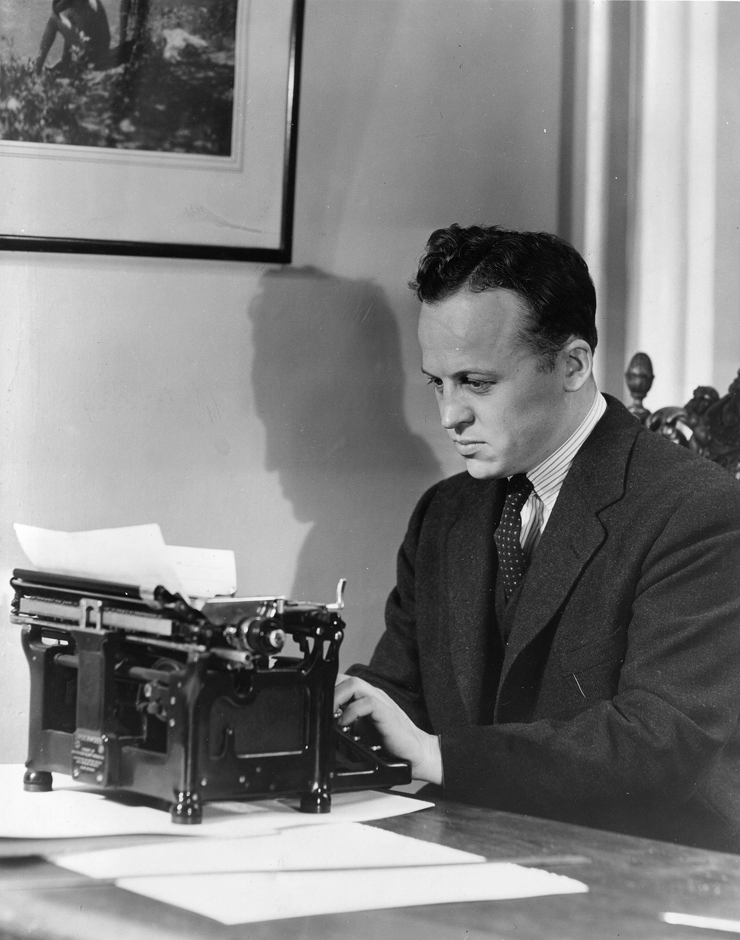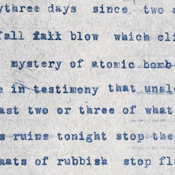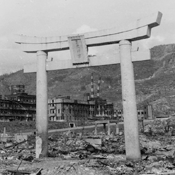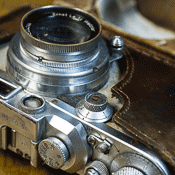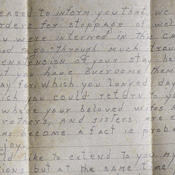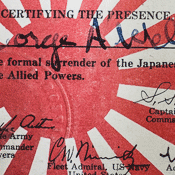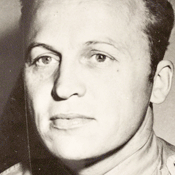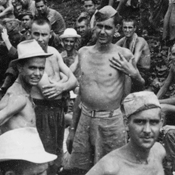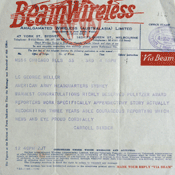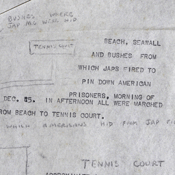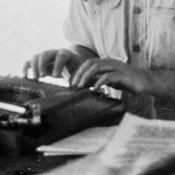George Weller (1907-2002) was among the eminent foreign correspondents of his era, winner of a 1943 Pulitzer Prize and a 1954 George Polk Award. Having begun as a lauded but penniless novelist during the Depression, much of his life was spent overseas. Fluent in five languages, for six decades he reported from hot spots around the world. His archive represents the “first draft of history” for more than half of the 20th century.
Following a poor upbringing in Boston, he attended Harvard on a scholarship, where he edited the Crimson then spent a year teaching at a ranch school for boys in Tucson. After that another scholarship brought him to University of Vienna, where he became the only native English-speaker in Max Reinhardt’s theater company, opposite Hedy Lamarr. During this time he wrote a novel, Not to Eat, Not For Love, which is still considered the best novel of undergraduate life at Harvard, and contributed to such magazines as Esquire and The New Yorker.
The Depression years were as hard on young avant garde novelists as they were on everyone else and despite critical acclaim for his first two novels, sales were poor and Weller took a job as a reporter at The New York Times. In 1940, he moved to the more widely syndicated Chicago Daily News and began covering the war in Europe.
During World War II he covered every major theater of battle, from Europe to Africa, to Southeast Asia and the Pacific. From Lisbon to Bucharest he described the early Nazi victories. He wrote the first eyewitness accounts of the airborne invasion of Crete. As the last reporter out of a burning Salonika (he escaped on several fishing boats), he was held by the Gestapo in Athens and taken to Berlin, where he was traded for a captured German.
In Africa he interviewed De Gaulle in exile, and Haile Selassie, and took part in a 2500 mile overland trek to attack an Italian-held fort in Ethiopia from the rear. After hearing about Pearl Harbor from Selassie, he went to Singapore where he covered the fall of the Malay peninsula to the Japanese, escaping to Java and then fleeing under fire on the last boat to leave before it, too, fell. A contemporary magazine account referred to him as “the much machine-gunned George Weller.”
On reaching Australia he sent out the first account of the Battle of the Java Sea and wrote a classic book of war reportage, Singapore Is Silent (1943). En route home in 1943 for leave he wrote Bases Overseas (1944), a controversial book proposing a global system of U.S. bases. He returned to the Pacific the long way round: via Italy to Greece, now liberated but in the throes of civil war; through Palestine, Syria, Lebanon, Iraq and Iran. In Burma he spent weeks with the local guerrillas behind Japanese lines, harassing the enemy, then endured the tortuous Burma road into China.
In Japan in September 1945, disguised as a U.S. colonel, he defied MacArthur’s news blackout and was the first outside observer into Nagasaki after the dropping of the atom bomb, and was the first Westerner to arrive at the nearby Allied prison camps. Believing him to be the vanguard of the American military, Japanese officials tried to surrender to him, and the doctors tried to get him to heal the mysterious “Disease X” that the bomb had caused, killing seemingly healthy Japanese weeks after the bomb had hit. He told the Allied prisoners he found that the war had ended – which they did not know – and liberated the camps, to the chagrin of both Japanese officials and captured U.S. military officers. All of his Nagasaki dispatches were censored and the originals lost, and they remained unpublished throughout his life. When they were discovered posthumously and published in a 2006 book edited by his son, they attracted worldwide headlines and front page notice in The New York Times.
Following WWII, Weller covered China (where he was imprisoned in Manchuria by Mao’s forces for two weeks). From 1947-8 he was a Nieman Fellow at Harvard and wrote a novel about Greece during WWII entitled The Crack in the Column (1949), dedicated to his late friend, CBS reporter George Polk; Weller was best man at Polk’s wedding. Weller received the Polk Memorial Award for foreign reporting in 1954. He took a few months’ leave to spearhead the 1955 Olympic PR campaign for Squaw Valley.
Throughout the 1950s & ’60s he covered the French struggle in Indochina; Asia, the Far East; and Eastern Europe (he was imprisoned in East Berlin). Toggling residences between Rome and Cyprus he principally reported on the Mediterranean, the Middle East, the USSR, Africa, and South America. In 1972 he retired from the CDN but continued to write for the Rome Daily American, International Daily News, Middle East International, and others. He was awarded the Premio Internazionale di Giornalismo of Italy for his early 1980s exposure of corruption in the Food & Agriculture branch of the U.N. [FAO].
George Weller’s archive documents six decades of the 20th century’s most dramatic conflicts, and it reveals the expense and effort that a free press entails. Weller understood his role as a reporter to help create the informed citizenry that Jefferson said American society would require, and the archive documents his daily struggles not only to get the story and write it, but also to get it past censors and editors and get it published in as close to its original form as possible.
The archive includes Weller’s reporting in its unedited form and its final published form; there are hundreds of pocket notebooks for his field notes; thousands of photographs and letters; the manuscripts of his books and larger works. He married the journalist Charlotte Ebener and her papers are included in the archive as well.
Weller’s archive dates from an era that was not only predigital but when even telephone service was unavailable in many of the parts of the world that he covered, so it serves a double function for history: it shows not only the events that he covered, but also how the news itself was made: what a reporter had to do to get to a story. Despite the remote and far-flung sites he reported from, he amazingly retained his expense accounts and documentation, and without access to telephone service he wrote letters. The 12,000+ pieces of correspondence in his archive represent a virtual Who’s Who of 20th century journalists. In an era without easy and reliable air travel to most parts of the world, Weller usually travelled alone to his stories and had to be his own photographer. The archive contains some 3,000+ photographs he took on the scenes he covered, most of which have never been seen. His photographs of Nagasaki were the first taken by a Westerner after the bomb.
George Weller’s archive is one of the most extensive journalistic archives of the century and it is particularly noteworthy because during his career he never retired from “the field” to a more stable, sedentary and safe position. As such, it embodies six decades on the front lines of history and the close-in view that entailed, along with the larger perspective required to make sense of world events for a reading audience often far removed from the places and issues of the moment. Like the broadcast journalists William Shirer and Edward R. Murrow, he often had to educate his readers about the subjects he covered before he could bring them up to date with his reports.
The intrepid print journalists of the mid-20th century have passed on at this point, and archives like this will seldom appear again. As an embodiment of its era and a firstperson view of a world in the throes of great upheaval, it is an unparalleled collection, and George Weller is an unequaled guide to it.
